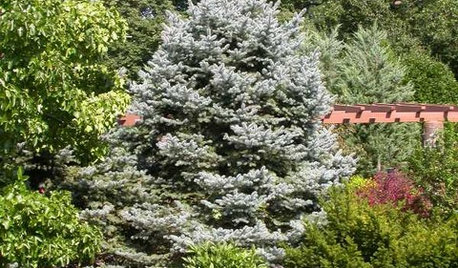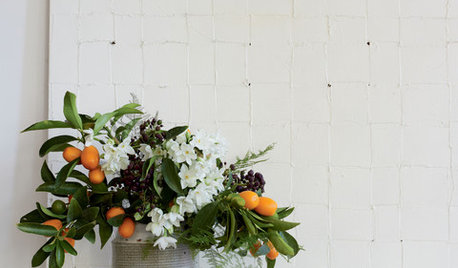Do all fruit trees need to be thinned?
estreya
14 years ago
Related Stories

EDIBLE GARDENSHow to Grow 10 Favorite Fruit Trees at Home
Plant a mini orchard in fall, winter or early spring to enjoy fresh-off-the-tree fruit the following year
Full Story
FARM YOUR YARDIf You Have Room for Only One Fruit Tree ...
Juice up a small garden with one of these easier-care or worth-the-effort fruit trees for a mild climate
Full Story
EDIBLE GARDENSGrow Plum Hybrids for Your Favorite Fruit Flavors
Plums are cozying up with apricots, peaches and even cherries — here’s how to grow these hybrids for the best aspects of each
Full Story
GARDENING AND LANDSCAPINGCrazy for Fruit Trees
Whether a single citrus or a mini apple orchard, even the smallest landscape space can bear deliriously delicious fruit
Full Story
LANDSCAPE DESIGN10 Evergreens for Beautiful Foliage All Year
Give your landscape consistent color and structure with the emeralds, chartreuses and blues of evergreen trees and shrubs
Full Story
EDIBLE GARDENSHow to Add an Apple Tree to Your Edible Garden
Readily available, beautiful and fragrant, apple trees offer four-season interest along with crisp, juicy fruit
Full Story
DECORATING GUIDESPut Your Best Fruit Forward in Splendid Fall Arrangements
Luscious, colorful and unbeatably fresh, fruit-centered arrangements bring welcome flavor to fall home decor
Full Story
MOST POPULARHow to Get Rid of Those Pesky Summer Fruit Flies
Learn what fruit flies are, how to prevent them and how to get rid of them in your home
Full Story
GARDENING GUIDESGreat Design Plant: Grow Blueberries for Their Fruit and More
Eastern gardeners should consider growing blueberry plants for their delicious fruits, bee-friendly spring blooms and brilliant fall foliage
Full Story
FALL GARDENING5 Fall Fruits You Can Grow in Containers
Brighten your porch or patio with a potted pomegranate, kumquat, blueberry bush or another great fall fruit
Full StoryMore Discussions







jellyman
estreyaOriginal Author
Related Professionals
Brentwood Landscape Architects & Landscape Designers · Cottonwood Landscape Architects & Landscape Designers · Manhattan Beach Landscape Architects & Landscape Designers · Marina Landscape Architects & Landscape Designers · Roosevelt Landscape Architects & Landscape Designers · Brooklyn Center Landscape Architects & Landscape Designers · Hartford Landscape Contractors · Beverly Hills Landscape Contractors · Gloucester Landscape Contractors · La Verne Landscape Contractors · New Brighton Landscape Contractors · Northbridge Landscape Contractors · Chicago Ridge Landscape Contractors · Northlake Landscape Contractors · Clearfield Landscape ContractorsScott F Smith
jellyman
softmentor
alan haigh
lycheeluva
myk1
estreyaOriginal Author
lycheeluva
glib
alan haigh
myk1
olpea
alan haigh
lycheeluva
alan haigh
larry_gene
alan haigh
keepitlow
alan haigh
murkwell
larry_gene
larry_gene
alan haigh
larry_gene
alan haigh
larry_gene